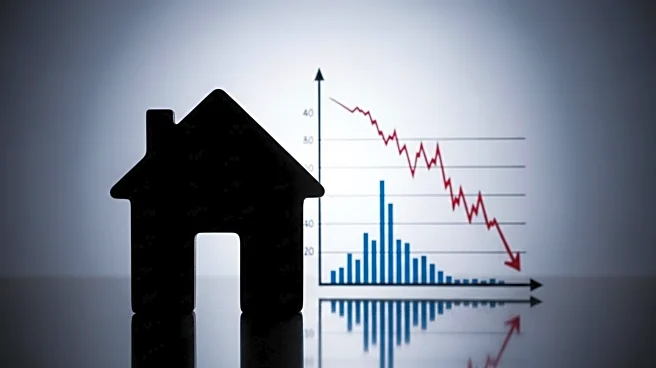What's Happening?
The U.S. housing market is reportedly entering a 'disinflation and deflationary vortex,' according to Nick Gerli, founder of Reventure App. Gerli highlights that national home price growth has slowed to nearly flat year-over-year, with prices declining in almost half of U.S. states. Rent growth has also slowed to its lowest level in 14 years, indicating an inventory buildup across the housing market. The slowdown is attributed to affordability issues, including high home prices, elevated borrowing costs, and rising insurance premiums. Despite these challenges, the median sale price of homes continues to rise, albeit at a slower rate. The rental market is experiencing similar pressures, with declining rents in several markets.
Why It's Important?
The current state of the housing market has significant implications for affordability and economic stability. As homebuyers face high debt-to-income ratios, demand is decreasing, potentially leading to further price declines. The rental market's downturn, driven by lower population growth and economic weakness, suggests broader economic challenges. Investors are also impacted, as they struggle to maintain properties amid declining demand. These factors contribute to a real-estate disinflation, which could ultimately benefit consumers by improving affordability. However, the uneven impact across regions highlights disparities in market conditions.
What's Next?
The housing market may continue to experience price declines, particularly in areas with surplus inventory. The rental market could see further corrections, improving affordability for tenants. Investors may continue to offload properties, affecting market dynamics. Policymakers and industry stakeholders may need to address affordability issues and support economic stability to mitigate potential negative impacts.
Beyond the Headlines
The housing market's challenges reflect broader economic trends, including income inequality and regional disparities. The slowdown in rent growth and home prices may signal shifts in consumer behavior and economic priorities. Long-term implications could include changes in housing policy and investment strategies.











